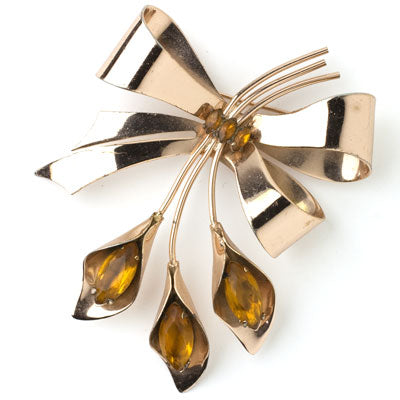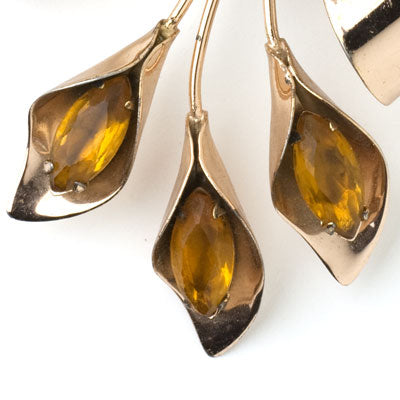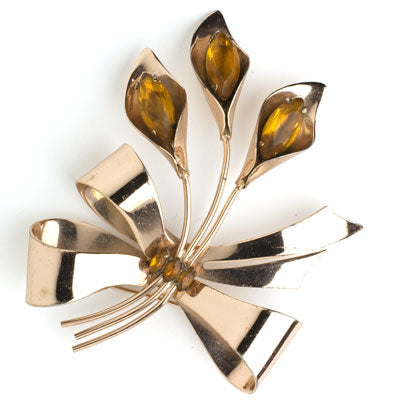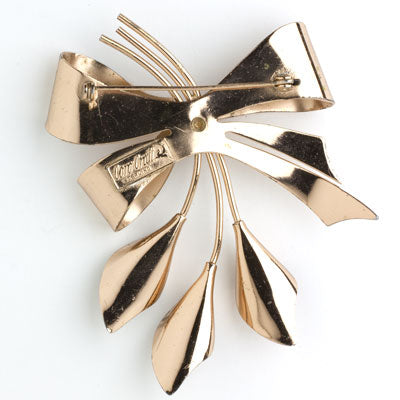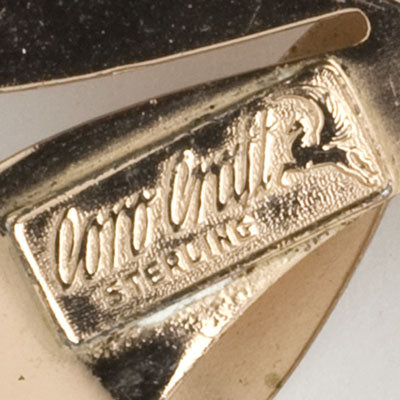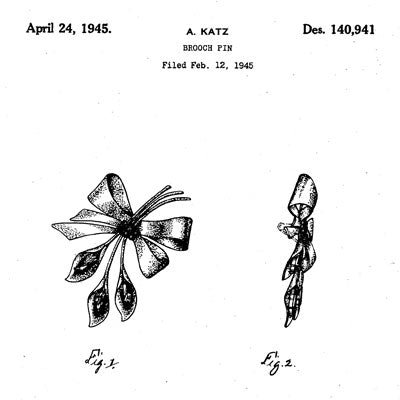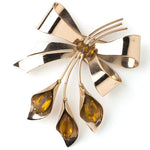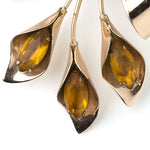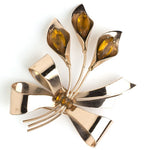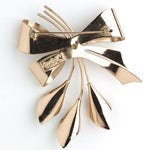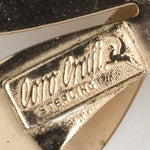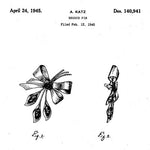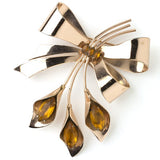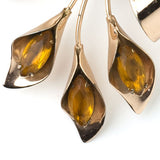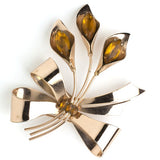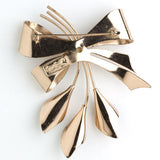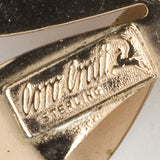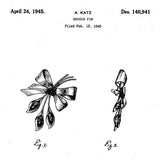Citrine Calla Lily Brooch by Coro
MAKER: Coro
SIZE: 3 1/8 x 2 5/8"
CONDITION: Excellent
DATE: c.1945 (based on design patent and use of sterling, per Brunialti)
MARKS: "Coro-Craft" (in script) with Pegasus and "STERLING" on rectangular cartouche
REFERENCE: Design patent D140,941 issued to Adolph Katz in 1945
This calla lily brooch is a rose-gold-plated sterling silver ribbon tied in a three-looped bow. Three stems of flowers with citrine-glass navette centers sit on top, and three tiny navettes tie the stems together. This 1940s Retro Modern creation has a roll-over safety catch. Until I saw the drawing on the design patent (in the last photo), I thought the brooch should be worn the other way around, so the flowers are reaching for the sky! The photos show the brooch both ways, so you can decide. This lovely Adolph Katz design for Coro’s high-end line, Corocraft, was also made with multi-colored stones – scroll down to see it.
FREE SHIPPING to the United States and Canada
Why Buy Vintage Costume Jewelry?
One reason is that it’s environmentally friendly. Resale fashion and vintage jewelry has become a preferred sustainable and affordable shopping choice by today’s discerning fashion and eco-conscious consumer.
Another major reason is the quality. Although vintage costume jewelry was made for all levels of the marketplace – from dime stores to high-end fashion boutiques and jewelry stores – you will find only the best pieces here. They were well-designed and carefully made to last. The manufacturers represented here used only the finest materials – glass stones and beads from Bohemia, Austria, and France, and faux pearls from France and Japan. Settings were primarily sterling silver, gold-filled, or base metals heavily plated with gold, silver, or rhodium. Stones were hand-set, and pieces were hand-finished.
The northeastern part of the U.S. was the center of the industry, with the largest companies located in Providence, Rhode Island by the end of World War II. During the Depression, the quality of costume pieces climbed to new levels when many jewelers and craftsmen had to switch to this segment of the industry. In addition, it attracted many skilled workers who fled the political situation in Europe for the U.S. For these reasons, designs and manufacturing techniques rivaled those employed in the making of fine jewelry.
A third reason to buy costume jewelry is its uniqueness. Having survived for so many decades in such wonderful condition and having been selected for their aesthetic quality, the pieces you’ll find here are unlikely to be found elsewhere.
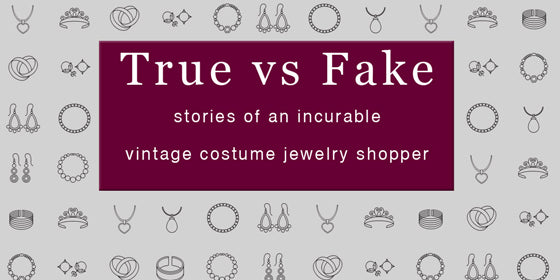
True vs Fake - how to shop vintage costume jewelry with confidence
Barbara Schwartz, a noted costume jewelry historian, is the author of "True vs Fake" , an in-depth blog series providing examples of how vintage costume jewelry can be accurately attributed. She also shares tips on how to avoid being duped into buying misidentified vintage costume jewelry.

